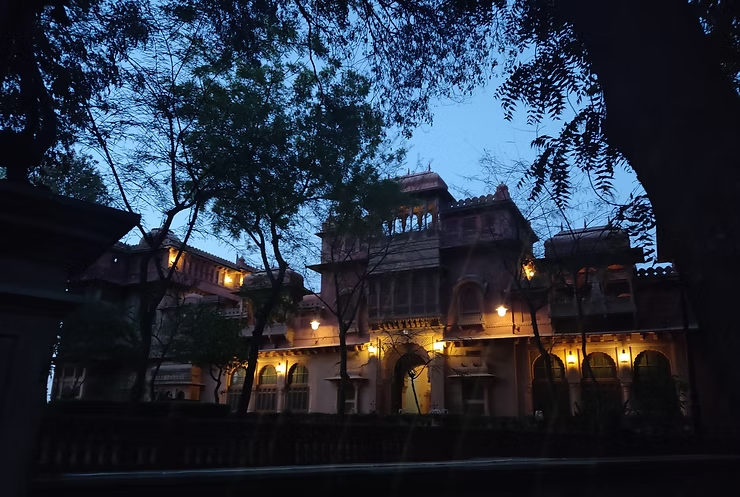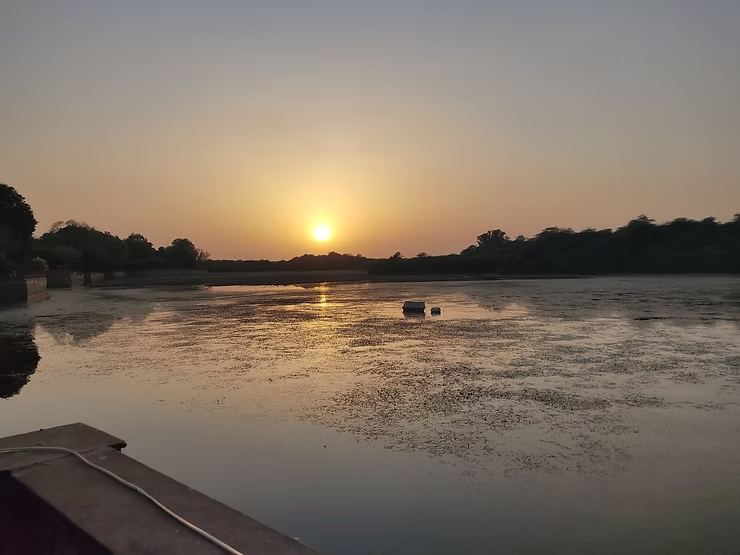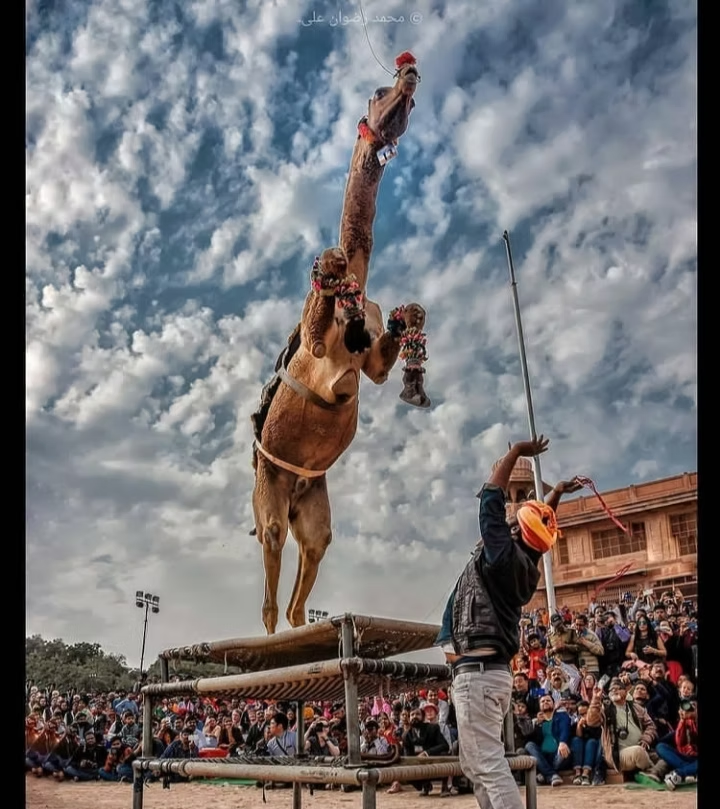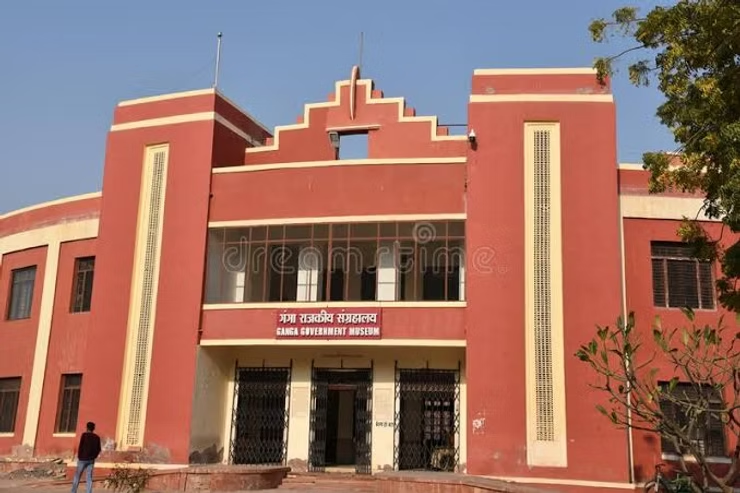
In the northwestern part of the desert state of India, lies the princely and colorful district of Bikaner. Named after its founder Rao Bikaji, Bikaner is known for generating some of the world’s best camels, consequently earning its nickname of ‘camel country’.
When you hear the name of this city what is the first thing that comes to your mind? Probably Bikaneri Bhujiya right! But did you know that Bikaner is home to one of the only 2 models of biplane used by British during the World War I, presented by the British to Maharaja Ganga Singh, the ruler of the time? Likewise, many such unique factors as a temple of rats make Bikaner the fourth-largest city of Rajasthan. HISTORY OF BIKANER

The ancestries of Bikaner can be traced back to the Rathore prince, Rao Bikaji, who established the kingdom of Bikaner back in 1488. Bikaji was one of Rao Jodhaji’s five sons, the renowned founder of Jodhpur. According to the Legend, Bikaji left his father’s Durbar in resentment after an unkind remark from his father and wandered far when he came upon the wilderness called Jangladesh where he decided to set up his kingdom and converted it into an extraordinary and stunning city now called Bikaner.
HOW TO REACH?
Bikaner is placed 330 kilometers northwest of the state capital, Jaipur. Bikaner city is the administrative headquarters of Bikaner District and Bikaner division.
By Road:-
Bikaner is well fulfilled with roads and buses are easily available. There are direct routes to major cities of India and Rajasthan like Delhi, Jaipur, Agra, Sri Ganganagar, Jodhpur, Alwar, Rewari, Narnaul, Ludhiana, Bhatinda, Ambala, Panipat, Surat, Ahmedabad, Ajmer, Haridwar, Jaisalmer, and many other cities.
By Train:-
Bikaner railway station is an important railway junction in the North Western Railway zone of Indian Railways. Today Bikaner Railway Station is efficiently well connected to National Capital Delhi and Rajasthan State’s capital Jaipur along with major Indian cities like Jodhpur, Kolkata, Mumbai, Kanpur, Agra, Allahabad, Surat, Ahmedabad, Vadodara, Pathankot, Amritsar, Haridwar, Jammu, Chandigarh, Pune, Bengaluru, Chennai, Hyderabad, Guwahati, Puri, Coimbatore, Thiruvananthapuram, Bhubaneswar, Indore, Jalandhar, etc.
By Air:-
Bikaner has a Domestic Civil Airport which is located 15 km west of the city. Regular flights to Jaipur and Delhi commenced in 2017-18.
BEST TIME TO VISIT
Bikaner is situated in Rajasthan a desert state, where the climate is of the extreme type therefore summers are extremely hot and winters are extremely cold. Hence the best time to visit Bikaner is during January and March and October and December. During this time the weather is breezy, pleasant, and a bit chill.
THINGS TO LOOK OUT FOR:-
Forts and Palaces
1. Junagarh Fort and Prachina Museum

Junagarh is a very distinctive fort. Its unique features, like being one of the few major forts in Rajasthan which is not built on a hilltop, make it stand out from all the other forts. Junagarh is also known for being an impenetrable fortress that holds the significance of having never been seized. It was constructed in 1588 AD by Raja Rai Singh, one of Emperor Akbar’s most prominent generals. The fort houses some gorgeous courtyards, balconies, jharokhas, and palaces beautifully designed in red sandstone and marble making it one of the best places to visit in Bikaner.
Fun fact: Bollywood movie Manikarnika: The Queen of Jhansi and Nayak were shot at Junagarh Fort.
In 1961, Maharaja Karni Singh set up a museum within the fortress that displays royal clothing, essences, accessories of Rajasthani majesty, cutlery, and portraits of the royalty. The ‘Poshaks’ which are the garments worn by Rajput ladies and the family portraits are a constant reminder of the fact that heritage and culture are slowly fading away. The craft of conventional designs, styles, and threadwork on exhibit conveys the fact that Bikaneri culture is so dynamic and vibrant.
2. Laxmi Niwas Palace

Laxmi Niwas Palace was the dwelling of the king of Bikaner, Maharaja Ganga Singh. Constructed between 1898 and 1902 by British architect Sir Samuel Swinton Jacob, this building showcases an Indo-Saracenic architectural character. It is now converted into a luxury hotel that is owned by the Royal Family of Bikaner.
Fun Fact: The Palace was portrayed as the gorgeous royal residence of Fawad Khan in the Bollywood movie Khoobsurat and was also used for shooting another Bollywood movie Baadshaho.
3. Lalgarh Palace

The construction of this lavish and imperial palace was initiated by Maharaja Ganga Singh in 1902 in remembrance of his late father Maharaja Lal Singh. The palace’s architectural marvel was brought to life by Sir Swinton Jacob, who cultivated this fantasy palace by stirring Rajput, Islamic, and European architecture.
Fun Fact: Dum Dum song from the Bollywood movie Band Baja Baraat was shot at this palace.
4. Gajner Palace and Lake

Gajner Palace is often nicknamed as an unrivaled gem of the Thar. Maharaja Gaj Singh of Bikaner laid the foundation for Gajner Palace in the year 1784 which was then finished off by the eminent Maharaja Ganga Singh of Bikaner on the banks of the lake. Covering vast lands of 6000 acres this palace has dramatic landscape, picturesque and architectural beauty. The palace is surrounded by forest and thus was meant to satisfy as a hunting and comfortable vacation residence for the royalty and visiting guests. It has now been transformed into a Heritage Hotel.
Fun Fact: Bollywood movie Anamika was shot at this Palace.

Temples
1. Karni Mata Temple

The Karni Mata Temple at Deshnok is considered the most called upon tourist in Bikaner. The 600-year-old temple is devoted to Karni Mata, who according to the folklore was a reincarnation of the Hindu Goddess Durga. Unlike any other temple, this holy place is not popular because of its architecture or its serene and spiritual vibe, it’s an attraction because it houses around 25,000 rats on its premises. The rats are religiously called Kaba and can be seen emerging out from the gaps in the walls and floors, often jumping over the feet of the devotees and believers. Visitors from all over the world and India come here to witness the rare white rat as the spectators are believed to be blessed with good luck and fortune.
2. Laxmi Nath Temple

Shri Laxminath Temple, built by Maharaja Rao Lunkaran, is one of the oldest temples of Bikaner and is located just 4km away from Junagarh Fort. The temple is built entirely by red sandstone and beautiful white marble while the sacred sanctum is decorated with glorious artwork and the doors are embedded with silver. Lord Vishnu and Goddess Laxmi, grace the holy shrine of the temple as the rulers of Bikaner regarded Lord Laxminathji (Lord Vishnu) as the real king of Bikaner and themselves as he subjugates. Festivals like Janmashtmi, Rama Navami, Diwali, and Gita Jayanti are majorly commemorated at the temple.
3. Bhandasar Jain Temple

Jain Temple Bhandasar is a 15th-century temple built by Bhandasar Oswal and is dedicated to the 5th Tirthankar, Sumatinathji, and is one of the oldest memorials of Bikaner. The temple is constructed from red sandstone while colorful and vibrant paintings adorn the walls and pillars. The design of the temple comprises detailed and sophisticated mirror work, murals, and mesmerizing gold leaf paintings. Locals say that from the very top of this temple you can see the entire landscape of Bikaner city, which is extremely aesthetic during sunsets. Devotees swarm the temple from all niches of the country.
4. Kodamdesar Temple

Kodamdesar Temple is located 24 kilometers from Bikaner and was installed by Rao Bikaji after he departed from Jodhpur as this place was first appointed to be the foundation of Bikaner City. The Temple is very eccentric in its way as it is entirely open, having no ceiling, rooms, and doors, and the entire floor is built of white marble. A huge idol of Bhairon Ji, an incarnation of Lord Shiva, is exactly at the center of the temple with a pond in its backdrop. The temple is considered very auspicious for newly-wedded couples and newborn babies who come here to seek blessings.
Havelis
1. Rampuria Haveli

Bikaner is known for its Havelis, the most famous assortment being the Rampuria Group of Havelis. Constructed out of dulmera stone, every characteristic of the Havelis be it jharokhas (casements), foyers, latticed windows, divankhanas, gumaharias, or cellar, is uniquely exotic and marvelous. Havelis are decorated with premium quality golden work and jharokhas are intricately designed with leaves and flowers. Their dankhanas (drawing room) are reminiscent of the Mughal and Rajput era with an abundant touch of Victorian influence. The wood carvings in Rampuria Havelis are incredibly exquisite and truly a sight to behold.
2. Bhairon Vilas

Prime Minister Maharaj Bhairon Singh Ji, first cousin of the ruler laid the foundation stone of Bhairon Vilas in the year 1872 and the Haveli was his residence. The property is named not only after its incredible founder but also because of the statue of god Bhairon installed on the premises. The delicate and quiet gardens with flower-filled water pools and lush green gardens are perfect for enjoying breakfast or dinner with traditional Rajasthani puppet or musical show or fire dancing, which can be arranged by the hotel.
Activities
1. Camel Farm and Festival

The National Research Centre on Camel is 8 kilometers from Bikaner city. The research and breeding center is the only one of its kind in Asia. The center covers over 2000 acres of semi-arid land and is regulated by the Government of India.
Bikaner Camel Festival, an annual extravaganza committed to ‘the Ship of the desert’, is organized by Rajasthan Tourism in January. The festivities encompass camel races, camel milking, fur cutting design, best breed competition, camel acrobatics, and camel beauty pageants. The camels are prettily bedecked and form a colorful exhibition against the red backdrop of the Junagarh Fort. There’s huge scope for eating, souvenir shopping, and photography at the festival. Other sights to behold contain the skirt-swirling Rajasthani folk dancers, fire dancers, and the stunning fireworks show, that lights up the night sky.
2. Ganga Gov. Museum and Rajasthan State Archives

Characterized as the best museum in the State, the Ganga Government museum richly exhibits archaeological artifacts from Harappa and the early Gupta periods. There are segregated sections for paintings, arts and crafts, woven carpets, clay pottery, ancient coins, and Rajput weaponry.
Visitors to the Rajasthan State Archives are mostly researchers and academicians who want to study the ancient managerial records that are preserved here. Some of the documents date back to the Mughal era and include, among others, Persian Farmans, Nishans, Manshurs, etc. This exceptional collection of records created during the management of the various princely states of Rajasthan is of immense value.
3. Devi Kund Sagar

Devi Kund Sagar is the royal crematorium located 8 kilometers from Bikaner City. It has different gorgeous chhatris (cenotaphs), devoted to the remembrance of a ruler of the Bikaji reign, and is situated on the exact location of their cremation. The chhatri of Maharaj Surat Singh is an excellent example of the architecture of that era as it is assembled solely in white marble with impressive Rajput paintings on its ceiling. Devi Kund also has cenotaphs of 22 female members of the royal family preliminary to Maharaja Gaj Singh, who committed sati. There is also one cenotaph of a sata (male sati) of a ruler.

4. Shopping

Bikaner is famous for its traditional and modern approaches alike. One can find a lot of local and street markets offering every item of Rajasthani lineage.
Kote Gate, a magnificent structure of Bikaner that separates the old city from the new has a street market as well. The market is the busiest market of Bikaner and is home to a variety of accessories made of camel hide, Kundan jewelry, open-toed sandals for men, colorful miniature paintings, wood carved objects, utensils, sweets, and vibrant, colorful khadi kurtas to beat the heat.
Expert Suggestion: High-quality bargaining skills are a must before you enter the place!
Bikaneri Cuisine and Delicacies
A vacation is unsatisfactory until you get to taste the native cuisine or food. While you can get Rajasthani cuisine like Dal Bati Churma in any city of Rajasthan, Bikaner is especially famous for its Bikaneri Bhujia, Papad, and Sweets.
1. Bhujiya and Papad
Bhujiya is a crispy, convenient, handy, and mouth-watering snack made from ground moth lentils that are found exclusively in the desert fields of Bikaner and Jodhpur, which gives this snack its delightful taste and long shelf life. Bikaneri Bhujiya is a must on your food list. Bikaneri papad is another mouth-watering savory snack that you must not miss.
Fun Fact: Bikaji Foods International Ltd. is one of India’s leading snack producer and exporter was established in Bikaner in 1987.
2. Bikaneri Sweets
Besides Bhujiya, the second famous dish in Bikaner is the spongy and flavorful Rasgulla. It’s either served with food or as an after-meal delicacy.
Kesar Fini is a sweet dish made using Kesar(saffron), rice flour, semolina, and then deep-fried in ghee to strengthen the taste.
A delightful sweet in Rajasthan, Ghevar is normally eaten during festivals like Makar Sakranti, but these have also become a prominent after-meal delicacy.
Expert Recommendation: Do enjoy Ghevar with dollops of Rabdi which is a type of condensed milk.
3. Restaurant Recommendations
A. Narendra Bhawan

A luxury and ornate hotel, Narendra Bhawan was the former residence of the last ruler Maharaja Narendra Singh. The hotel is also supplied by an extremely regal restaurant, courtyard, and rooftop infinity pool.
B. Basant Vihar

The Basant Vihar Palace was built by Maharaja Ganga Singh Ji in the 19th Century, It was built for the celebration of festivals. The hotel is very elegant yet royal and according to popular opinion, the food here is among the best in Bikaner.
C. Heeralal Restaurant
Laal Maas is best enjoyed with bread, roti, or rice. Though it is very hot, the dish is still a favorite among the non-vegetarian-eating people of Bikaner.
Bikaner city is an exotic beauty of Rajasthan that will warm your heart and fill you with regality. It is one of the most underrated tourist destinations in Rajasthan, therefore visitors can have a peaceful and very calm vacation here. Every aspect of the city is vibrant and dynamic starting from history and culture to tradition, adventure, and cuisine. With its mesmerizing architecture and admirable traditions, it will be that underdog vacation that impacts your mind to this level.






